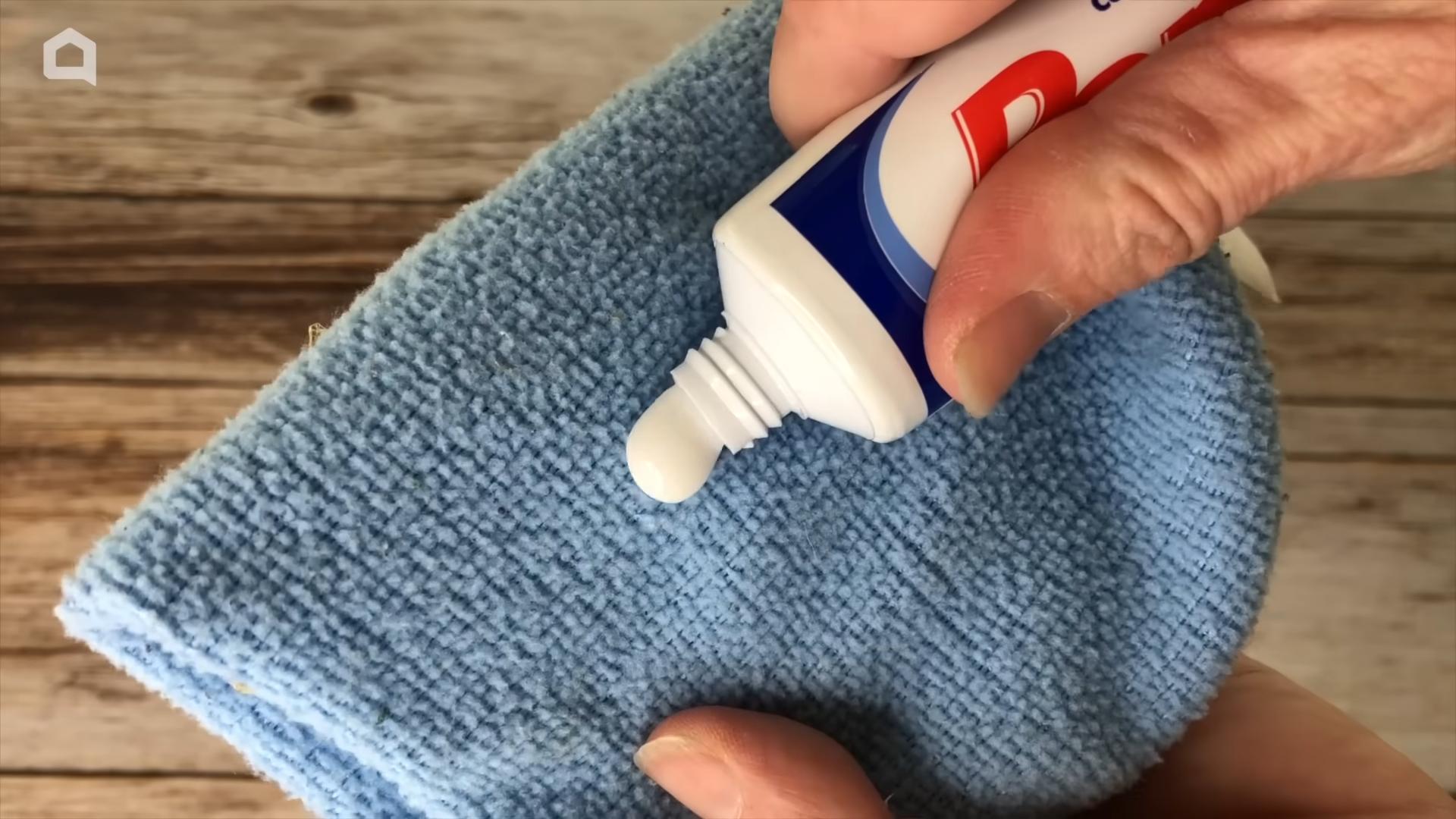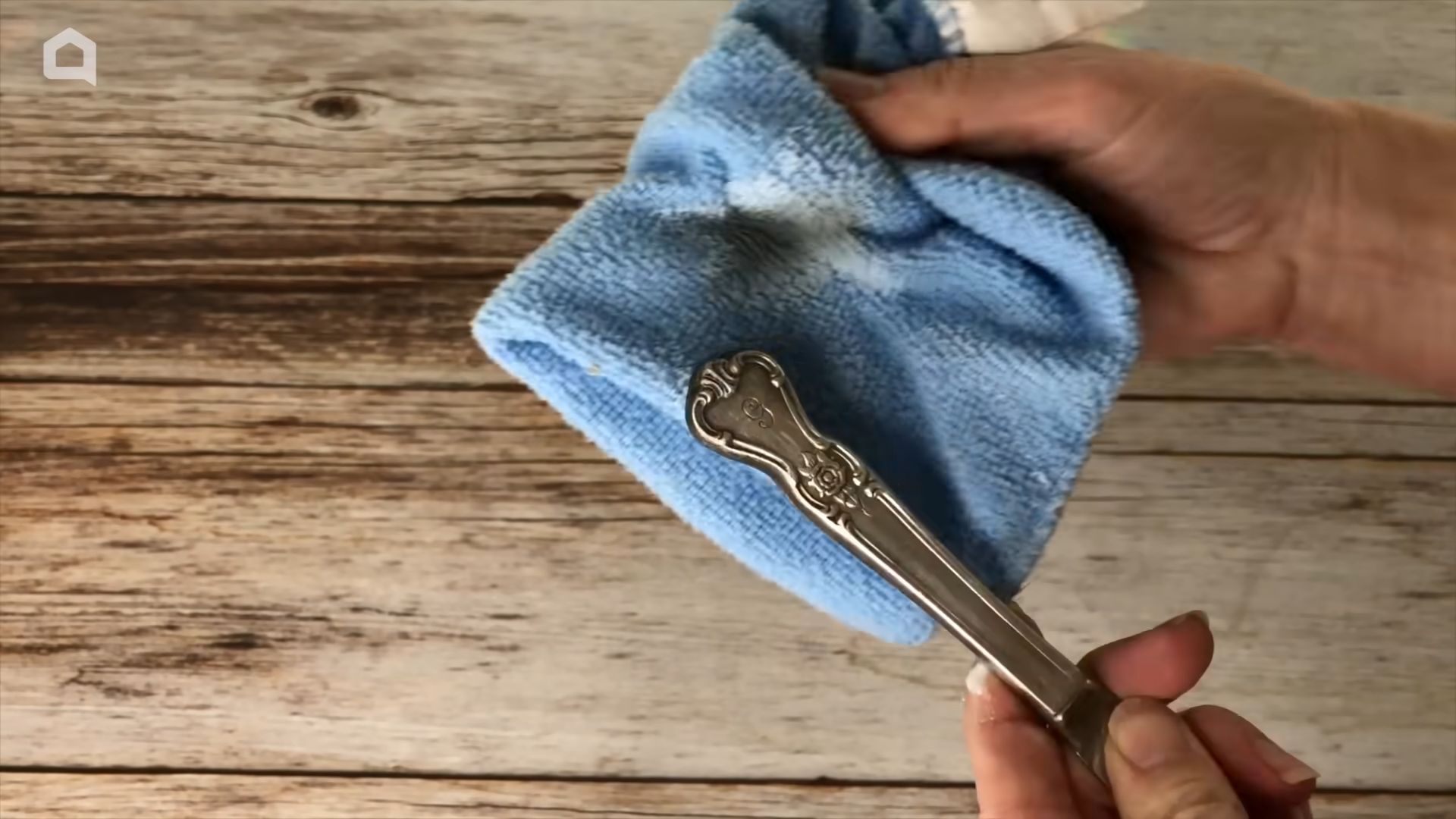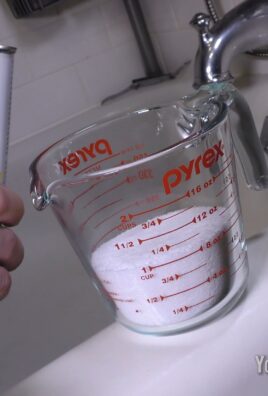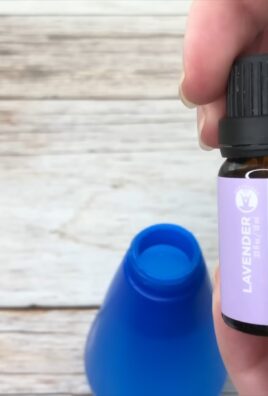Toothpaste cleaning hacks – who knew that the humble tube sitting in your bathroom could be your secret weapon for a sparkling home? I’m always on the lookout for clever DIY solutions, and let me tell you, I was blown away by the versatility of toothpaste when it comes to cleaning. Forget harsh chemicals and expensive specialty cleaners; you probably already have the solution to many of your household woes sitting right there!
While toothpaste as we know it is a relatively modern invention, the concept of using abrasive substances to clean teeth dates back centuries. Ancient Egyptians used a powder made from pumice and vinegar, while Romans favored crushed bones and oyster shells. Thankfully, our modern toothpaste is a bit more palatable (and effective!) for cleaning beyond our pearly whites.
But why should you care about toothpaste cleaning hacks? Because life is busy! We all want a clean and tidy home, but who has the time (or the budget) to spend hours scrubbing with a million different products? These simple, effective tricks will save you time, money, and effort. From removing stubborn stains to polishing silver, you’ll be amazed at what a little bit of toothpaste can do. So, grab your tube and let’s get cleaning!

DIY Toothpaste Cleaning Hacks: Beyond Brushing Your Teeth!
Hey there, fellow DIY enthusiasts! I’m always on the lookout for clever ways to save money and tackle everyday cleaning challenges. And guess what? My trusty tube of toothpaste has become my secret weapon! Forget expensive cleaning products – toothpaste is surprisingly effective for a whole range of household tasks. Let’s dive into some of my favorite toothpaste cleaning hacks!
Cleaning Shoes with Toothpaste
Dirty shoes can really bring down an outfit, and let’s be honest, who wants to spend a fortune on shoe cleaners? Toothpaste to the rescue! This works especially well on white sneakers or shoes with rubber soles.
What you’ll need:
* Old toothbrush or cleaning brush
* White, non-gel toothpaste (avoid colored or whitening toothpaste for colored shoes)
* Damp cloth or sponge
* Water
Step-by-step instructions:
1. Prepare your shoes: Remove any loose dirt or debris from your shoes by tapping them together or using a dry brush.
2. Apply the toothpaste: Squeeze a small amount of toothpaste onto the dirty areas of your shoes. I usually focus on scuff marks, stains, and the rubber soles.
3. Scrub gently: Using your old toothbrush or cleaning brush, gently scrub the toothpaste into the affected areas. Use circular motions for best results. Don’t scrub too hard, especially on delicate materials like leather or suede.
4. Let it sit (optional): For stubborn stains, let the toothpaste sit on the shoes for about 5-10 minutes. This allows the toothpaste to penetrate the stain and break it down.
5. Wipe clean: Dampen a clean cloth or sponge with water and wipe away the toothpaste residue. You may need to rinse the cloth or sponge several times to remove all the toothpaste.
6. Dry your shoes: Allow your shoes to air dry completely. Avoid placing them in direct sunlight or near a heat source, as this can damage the materials.
Important Note: Always test the toothpaste on a small, inconspicuous area of your shoe first to ensure it doesn’t discolor or damage the material. This is especially important for colored shoes or delicate fabrics.
Removing Water Rings from Wood Furniture
Ugh, water rings! They’re the bane of every furniture lover’s existence. But don’t despair – toothpaste can help!
What you’ll need:
* White, non-gel toothpaste
* Soft cloth
* Damp cloth
* Furniture polish (optional)
Step-by-step instructions:
1. Apply the toothpaste: Place a small dab of toothpaste directly onto the water ring.
2. Gently rub: Using a soft cloth, gently rub the toothpaste into the water ring in a circular motion. Be careful not to apply too much pressure, as you don’t want to scratch the finish.
3. Wipe away the residue: Dampen a clean cloth and wipe away the toothpaste residue.
4. Dry the area: Use a dry cloth to thoroughly dry the area.
5. Polish (optional): If desired, apply furniture polish to the area to restore the shine and protect the wood.
Important Note: This method works best on finished wood surfaces. Avoid using it on unfinished wood, as the toothpaste can stain the wood. Again, test in an inconspicuous area first!
Polishing Silverware and Jewelry
Tarnished silverware and jewelry can look dull and lifeless. Toothpaste can bring back their shine without the need for harsh chemicals.
What you’ll need:
* White, non-gel toothpaste
* Soft cloth or toothbrush
* Warm water
Step-by-step instructions:
1. Apply the toothpaste: Apply a small amount of toothpaste to a soft cloth or toothbrush.
2. Gently rub: Gently rub the toothpaste onto the tarnished silverware or jewelry. For intricate pieces, use a toothbrush to reach into the crevices.
3. Rinse thoroughly: Rinse the silverware or jewelry thoroughly with warm water to remove all traces of toothpaste.
4. Dry and buff: Dry the silverware or jewelry with a clean, soft cloth. Buff gently to restore the shine.
Important Note: Avoid using toothpaste on delicate jewelry, such as pearls or opals, as it can damage the surface. Also, avoid using whitening toothpaste on gold jewelry, as it can scratch the surface.
Cleaning Bathroom Fixtures
Toothpaste is a surprisingly effective cleaner for bathroom fixtures like faucets, showerheads, and sinks. It can remove water spots, soap scum, and even rust stains.
What you’ll need:
* White, non-gel toothpaste
* Old toothbrush or sponge
* Water
Step-by-step instructions:
1. Apply the toothpaste: Apply a small amount of toothpaste to the bathroom fixture.
2. Scrub gently: Using an old toothbrush or sponge, gently scrub the toothpaste into the fixture. Pay attention to areas with water spots, soap scum, or rust stains.
3. Rinse thoroughly: Rinse the fixture thoroughly with water to remove all traces of toothpaste.
4. Dry and polish: Dry the fixture with a clean cloth. Buff gently to restore the shine.
Important Note: Avoid using toothpaste on gold-plated fixtures, as it can scratch the surface.
Removing Crayon Marks from Walls
Kids and crayons – a classic combination! But crayon marks on walls? Not so classic. Toothpaste can help you remove those unwanted masterpieces.
What you’ll need:
* White, non-gel toothpaste
* Soft cloth
* Damp cloth
Step-by-step instructions:
1. Apply the toothpaste: Apply a small amount of toothpaste to the crayon marks.
2. Gently rub: Using a soft cloth, gently rub the toothpaste into the crayon marks.
3. Wipe away the residue: Dampen a clean cloth and wipe away the toothpaste residue.
4. Dry the area: Use a dry cloth to thoroughly dry the area.
Important Note: Test the toothpaste on a small, inconspicuous area of the wall first to ensure it doesn’t damage the paint. This is especially important for matte or delicate paint finishes.
Defogging Bathroom Mirrors
Steamy showers are great, but foggy mirrors? Not so much. Toothpaste can help keep your bathroom mirror clear.
What you’ll need:
* White, non-gel toothpaste
* Soft cloth
* Water
Step-by-step instructions:
1. Apply the toothpaste: Apply a thin layer of toothpaste to the entire surface of the mirror.
2. Wipe clean: Using a damp cloth, wipe away the toothpaste.
3. Dry and buff: Dry the mirror with a clean, soft cloth. Buff gently to remove any streaks.
Important Note: Be sure to apply a very thin layer of toothpaste to avoid leaving a residue.
Cleaning Your Cell Phone Screen
Our cell phones are constantly exposed to germs and fingerprints. Toothpaste can help clean and polish your screen.
What you’ll need:
* White, non-gel toothpaste
* Soft cloth
* Damp cloth
Step-by-step instructions:
1. Apply the toothpaste: Apply a very small amount of toothpaste to a soft cloth.
2. Gently rub: Gently rub the cloth onto the screen in a circular motion. Be careful not to get any toothpaste into the phone’s openings.
3. Wipe away the residue: Dampen a clean cloth and wipe away the toothpaste residue.
4. Dry the screen: Use a dry cloth to thoroughly dry the screen.
Important Note: Use extreme caution when cleaning your cell phone screen with toothpaste. Apply a very small amount and avoid getting any toothpaste into the phone’s openings. It’s always best to use a screen protector to prevent scratches.
Removing Scratches from CDs and DVDs
Scratched CDs and DVDs can skip or not play at all. Toothpaste can sometimes help to buff out minor scratches.
What you’ll need:
* White, non-gel toothpaste
* Soft cloth
* Water
Step-by-step instructions:
1. Apply the toothpaste: Apply a small amount of toothpaste to the scratched area of the CD or DVD.
2. Gently rub: Gently rub the toothpaste into the scratch in a radial motion (from the center outwards).
3. Rinse thoroughly: Rinse the CD or DVD thoroughly with water to remove all traces of toothpaste.
4. Dry carefully: Dry the CD or DVD carefully with a clean, soft cloth.
Important Note: This method may not work for deep scratches. Also, be very gentle when rubbing the toothpaste, as you don’t want to create more scratches.
Removing Stains

Conclusion
So, there you have it! Unlocking the surprising power of toothpaste extends far beyond just oral hygiene. This simple, readily available product can be a game-changer in your cleaning routine, offering an effective and affordable alternative to harsh chemicals and specialized cleaners. From restoring the sparkle to your jewelry to banishing stubborn stains on your clothes and even revitalizing your sneakers, the versatility of toothpaste is truly remarkable.
Why is this DIY toothpaste cleaning hack a must-try? Because it’s practical, economical, and surprisingly effective. You likely already have a tube of toothpaste in your bathroom, eliminating the need to purchase additional cleaning supplies. It’s also a gentler option for delicate surfaces compared to abrasive cleaners, minimizing the risk of damage. Plus, the fresh minty scent is a welcome bonus, leaving your cleaned items smelling clean and refreshed.
But don’t just take our word for it! Experiment with different types of toothpaste to find what works best for specific cleaning tasks. For instance, a whitening toothpaste might be particularly effective for brightening dull surfaces, while a gel toothpaste might be gentler on delicate materials. You can also adjust the consistency by adding a little water to create a paste or using it directly from the tube for tougher stains.
Here are a few suggestions and variations to get you started:
* For removing water stains from wood furniture: Gently rub a small amount of non-gel toothpaste onto the stain in a circular motion with a soft cloth. Wipe away the residue with a damp cloth and buff dry.
* To clean your bathroom sink: Apply toothpaste directly to the sink surface and scrub with a sponge or cloth. Rinse thoroughly with water.
* For polishing chrome fixtures: Use a soft toothbrush to apply toothpaste to chrome fixtures and scrub gently. Rinse with water and dry with a clean cloth.
* To remove crayon marks from walls: Dab a small amount of toothpaste onto the crayon marks and gently rub with a damp cloth. Wipe away the residue with a clean cloth.
We encourage you to embrace the power of toothpaste cleaning hacks and discover the many ways it can simplify your life and enhance your cleaning routine. Don’t be afraid to experiment and find new uses for this everyday product.
Now, we want to hear from you! Have you tried any of these toothpaste cleaning hacks? What were your results? Do you have any other creative uses for toothpaste that we haven’t mentioned? Share your experiences and tips in the comments below. Let’s learn from each other and unlock the full potential of this amazing cleaning tool! Your insights could help others discover a new and effective way to tackle their cleaning challenges. So, go ahead, give it a try, and let us know what you think! We’re excited to see what you discover.
Frequently Asked Questions (FAQs)
1. What kind of toothpaste is best for cleaning?
The best type of toothpaste for cleaning depends on the specific task. Generally, a plain, white, non-gel toothpaste is recommended for most cleaning purposes. Avoid using colored or heavily gelled toothpastes, as they may contain dyes or ingredients that could stain or damage surfaces. For tougher stains or polishing, a whitening toothpaste might be more effective due to its slightly abrasive properties. However, always test a small, inconspicuous area first to ensure it doesn’t cause any damage or discoloration. Remember, the goal is to clean, not to harm the surface you’re working on.
2. Can I use toothpaste on all surfaces?
No, toothpaste is not suitable for all surfaces. It’s best to avoid using toothpaste on delicate or porous materials, such as leather, painted surfaces, or certain types of fabrics. The abrasive nature of toothpaste can scratch or damage these surfaces. Always test a small, hidden area before applying toothpaste to the entire surface. If you’re unsure whether toothpaste is safe to use on a particular material, consult the manufacturer’s instructions or seek advice from a professional cleaner.
3. Will toothpaste damage my jewelry?
Toothpaste can be used to clean certain types of jewelry, such as gold, silver, and platinum. However, it’s important to use a non-gel toothpaste and a soft cloth to avoid scratching the surface. Avoid using toothpaste on delicate gemstones, such as pearls, opals, or emeralds, as it can damage their luster. For these types of jewelry, it’s best to use a specialized jewelry cleaner or consult a professional jeweler. Always rinse your jewelry thoroughly after cleaning with toothpaste and dry it with a soft cloth.
4. How do I remove toothpaste residue after cleaning?
So, there you have it! Unlocking the surprising power of toothpaste extends far beyond just oral hygiene. This simple, readily available product can be a game-changer in your cleaning routine, offering an effective and affordable alternative to harsh chemicals and specialized cleaners. From restoring the sparkle to your jewelry to banishing stubborn stains on your clothes and even revitalizing your sneakers, the versatility of toothpaste is truly remarkable.
Why is this DIY toothpaste cleaning hack a must-try? Because it’s practical, economical, and surprisingly effective. You likely already have a tube of toothpaste in your bathroom, eliminating the need to purchase additional cleaning supplies. It’s also a gentler option for delicate surfaces compared to abrasive cleaners, minimizing the risk of damage. Plus, the fresh minty scent is a welcome bonus, leaving your cleaned items smelling clean and refreshed.
But don’t just take our word for it! Experiment with different types of toothpaste to find what works best for specific cleaning tasks. For instance, a whitening toothpaste might be particularly effective for brightening dull surfaces, while a gel toothpaste might be gentler on delicate materials. You can also adjust the consistency by adding a little water to create a paste or using it directly from the tube for tougher stains.
Here are a few suggestions and variations to get you started:
* For removing water stains from wood furniture: Gently rub a small amount of non-gel toothpaste onto the stain in a circular motion with a soft cloth. Wipe away the residue with a damp cloth and buff dry.
* To clean your bathroom sink: Apply toothpaste directly to the sink surface and scrub with a sponge or cloth. Rinse thoroughly with water.
* For polishing chrome fixtures: Use a soft toothbrush to apply toothpaste to chrome fixtures and scrub gently. Rinse with water and dry with a clean cloth.
* To remove crayon marks from walls: Dab a small amount of toothpaste onto the crayon marks and gently rub with a damp cloth. Wipe away the residue with a clean cloth.
We encourage you to embrace the power of toothpaste cleaning hacks and discover the many ways it can simplify your life and enhance your cleaning routine. Don’t be afraid to experiment and find new uses for this everyday product.
Now, we want to hear from you! Have you tried any of these toothpaste cleaning hacks? What were your results? Do you have any other creative uses for toothpaste that we haven’t mentioned? Share your experiences and tips in the comments below. Let’s learn from each other and unlock the full potential of this amazing cleaning tool! Your insights could help others discover a new and effective way to tackle their cleaning challenges. So, go ahead, give it a try, and let us know what you think! We’re excited to see what you discover.
Frequently Asked Questions (FAQs)
1. What kind of toothpaste is best for cleaning?
The best type of toothpaste for cleaning depends on the specific task. Generally, a plain, white, non-gel toothpaste is recommended for most cleaning purposes. Avoid using colored or heavily gelled toothpastes, as they may contain dyes or ingredients that could stain or damage surfaces. For tougher stains or polishing, a whitening toothpaste might be more effective due to its slightly abrasive properties. However, always test a small, inconspicuous area first to ensure it doesn’t cause any damage or discoloration. Remember, the goal is to clean, not to harm the surface you’re working on.
2. Can I use toothpaste on all surfaces?
No, toothpaste is not suitable for all surfaces. It’s best to avoid using toothpaste on delicate or porous materials, such as leather, painted surfaces, or certain types of fabrics. The abrasive nature of toothpaste can scratch or damage these surfaces. Always test a small, hidden area before applying toothpaste to the entire surface. If you’re unsure whether toothpaste is safe to use on a particular material, consult the manufacturer’s instructions or seek advice from a professional cleaner.
3. Will toothpaste damage my jewelry?
Toothpaste can be used to clean certain types of jewelry, such as gold, silver, and platinum. However, it’s important to use a non-gel toothpaste and a soft cloth to avoid scratching the surface. Avoid using toothpaste on delicate gemstones, such as pearls, opals, or emeralds, as it can damage their luster. For these types of jewelry, it’s best to use a specialized jewelry cleaner or consult a professional jeweler. Always rinse your jewelry thoroughly after cleaning with toothpaste and dry it with a soft cloth.
4. How do I remove toothpaste residue after cleaning?
Removing toothpaste residue is simple. Just use a damp cloth or sponge to wipe away any remaining toothpaste from the surface. Rinse the area thoroughly with water and dry it with a clean cloth. For hard-to-reach areas, you can use a cotton swab or a soft toothbrush to remove the residue. Make sure to remove all traces of toothpaste to prevent any potential staining or discoloration.
5. Can toothpaste remove scratches from screens?
While some people claim that toothpaste can remove scratches from screens, it’s generally not recommended. Toothpaste is abrasive and can potentially damage the screen further. There are specialized screen repair kits available that are designed to safely remove scratches from screens. It’s always best to use a product that is specifically designed for the task at hand.
6. Is toothpaste safe to use around children and pets?
While toothpaste is generally safe, it’s important to keep it out of reach of children and pets. Toothpaste contains fluoride, which can be harmful if ingested in large quantities. If a child or pet accidentally ingests toothpaste, contact a doctor or veterinarian immediately. When using toothpaste for cleaning, make sure to keep the area well-ventilated and avoid getting toothpaste in your eyes.
7. Can I use toothpaste to clean my shoes?
Yes, toothpaste can be used to clean certain types of shoes, such as sneakers and canvas shoes. Apply a small amount of non-gel toothpaste to the dirty areas and scrub gently with a soft brush or cloth. Rinse the shoes thoroughly with water and allow them to air dry. Avoid using toothpaste on leather shoes, as it can damage the material.
8. How often should I use toothpaste for cleaning?
The frequency of using toothpaste for cleaning depends on the specific task and the surface being cleaned. For general cleaning, you can use toothpaste as needed. However, it’s important to avoid overusing toothpaste, as it can be abrasive and potentially damage surfaces. Always test a small, hidden area before applying toothpaste to the entire surface.
9. Are there any alternatives to toothpaste for cleaning?
Yes, there are many alternatives to toothpaste for cleaning, depending on the specific task. For example, baking soda, vinegar, lemon juice, and hydrogen peroxide can be used for various cleaning purposes. It’s important to research the best cleaning method for the specific surface and stain you’re dealing with.
10. What if the toothpaste cleaning hack doesn’t work?
If the toothpaste cleaning hack doesn’t work, don’t be discouraged. Some stains and surfaces are more difficult to clean than others. Try using a different type of toothpaste or a different cleaning method. You can also consult a professional cleaner for advice. Remember, cleaning is often a process of trial and error, so don’t give up easily.




Leave a Comment